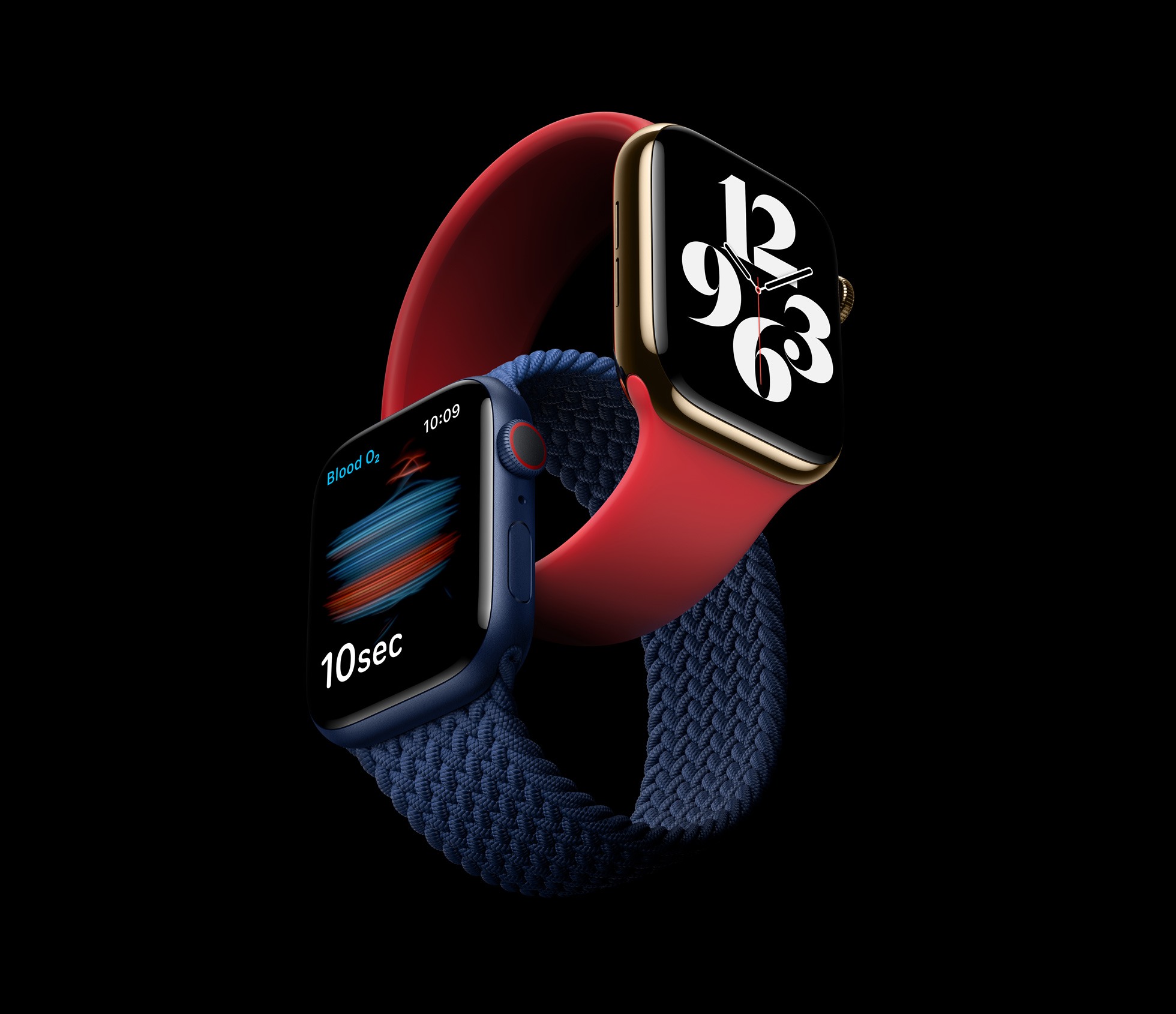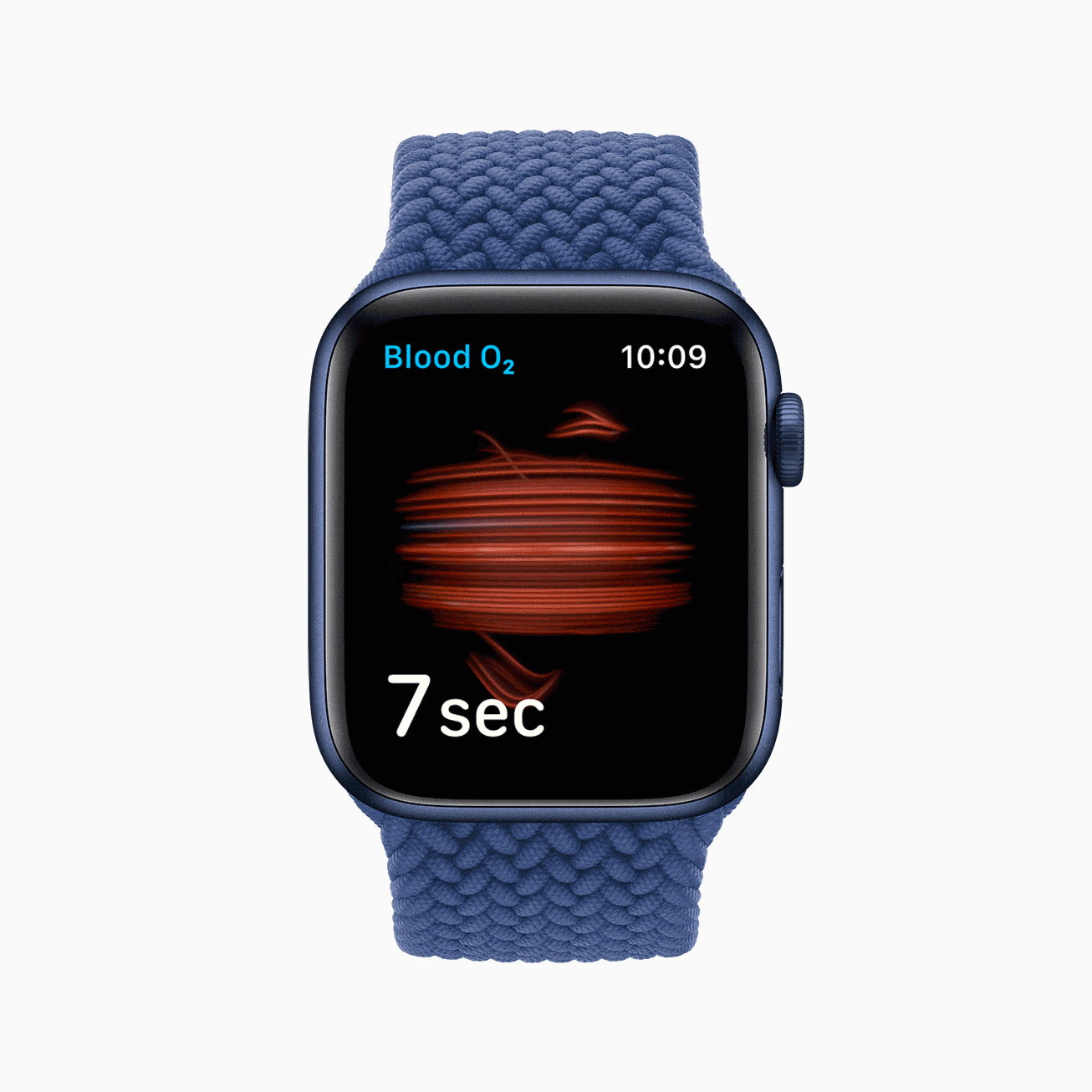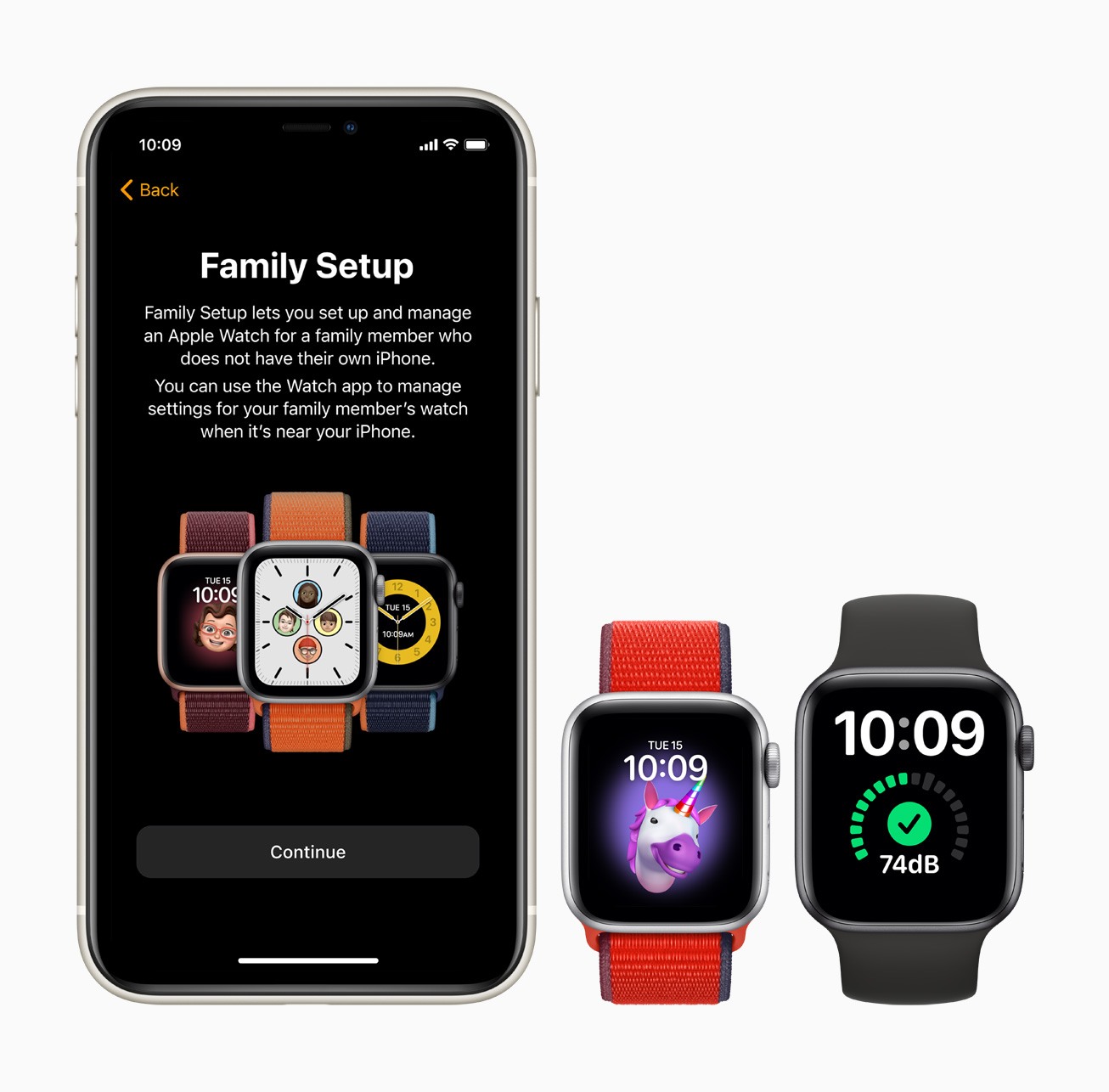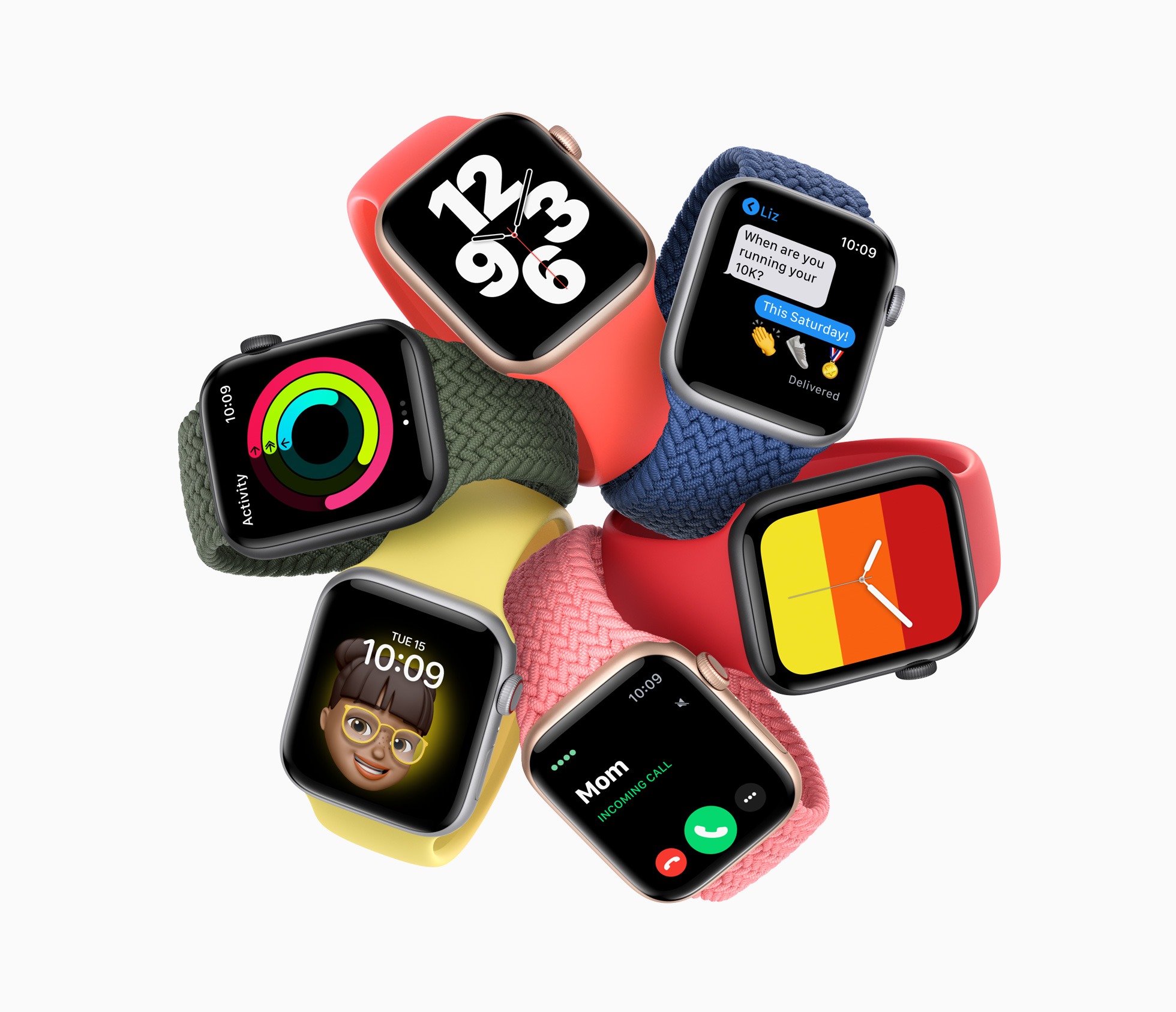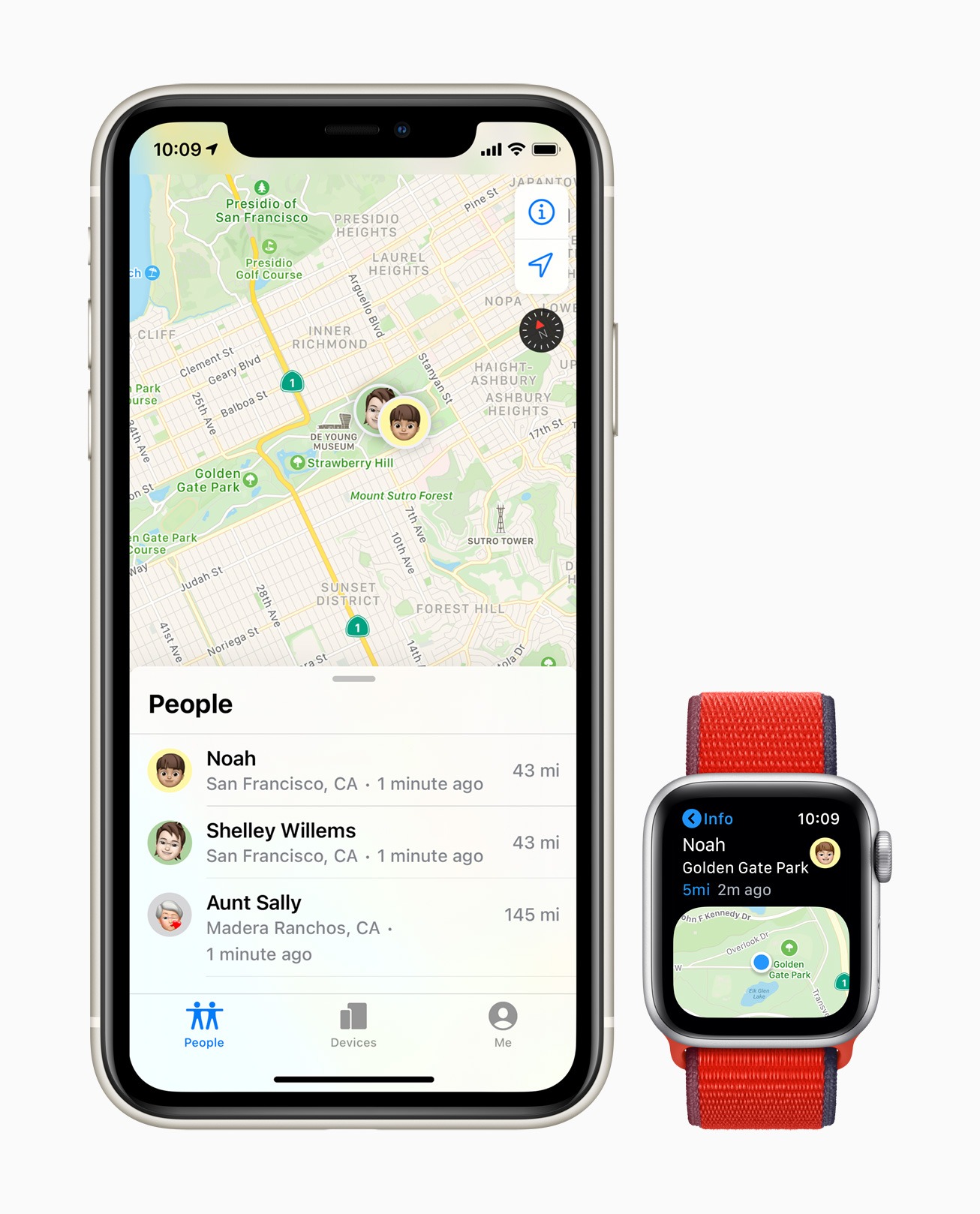Today in what would normally be an iPhone-led September event, the Apple Watch was able to serve as headliner since new iPhones won’t be coming until October. It was a fitting change because Apple had news to share about not one, but two new Apple Watch models: the Apple Watch Series 6 and Apple Watch SE.
These two devices follow Apple’s strategy with the iPhone, where there’s a flagship line plus a more affordable option that uses a mix of old and new parts. The Apple Watch Series 6 includes a new blood oxygen sensor, improved always-on display, S6 processor, an always-on altimeter, and new finishes. The Apple Watch SE also features the always-on altimeter and a similar design, but without the new color finishes, it includes the S5 processor from last year, but it doesn’t get the blood oxygen sensor nor does it include an always-on display. A new software addition is another key incentive for both the Series 6 and SE: Family Setup, which enables children to be Apple Watch users without having their own iPhones.
Both new Apple Watches are available to order now, and will ship this Friday, September 18. Here’s the full run-down on each new device.
Apple Watch Series 6
The tentpole feature of this year’s flagship Apple Watch is its new blood oxygen sensor, which arrives at an especially fitting time as the current pandemic has directly impacted oxygen levels for many who have been infected with COVID-19.
Like the ECG app added a couple years ago, the Apple Watch Series 6 features a dedicated Blood Oxygen app where a user can get an on-demand reading of their current blood oxygen level. The scan takes 15 seconds to complete, using the new Watch’s cluster of red, green, and infared LEDs and photodiodes to measure light that’s reflected back from a user’s blood. The Watch will also perform blood oxygen checks periodically in the background passively, storing all data to the iPhone’s Health app. If you’ve ever used the ECG app on a previous Apple Watch, Apple has built a very similar experience here for blood oxygen monitoring.
Following the introduction of this blood oxygen feature, Apple will be initiating three new research programs for interested users, one related to asthma, another related to heart failure, and a third considering respiratory conditions like COVID-19 and influenza.
Another core improvement in the Series 6 is a better always-on display than what the Series 5 contained. Though the Watch offers the same 40mm and 44mm size options as last year, Apple has made its display 2.5 times brighter when your wrist is lowered outdoors, so you won’t have to raise your wrist as often just to read the display. Another nice change is users can now tap on complications, access Notification Center and Control Center, and switch watch faces without needing to wake the full screen; last year’s Series 5 model didn’t enable any interactions while the screen was dimmed.
A couple spec bump updates include the new S6 system on a chip, which includes a dual-core processor based on the A13. Apple says the S6 is up to 20% faster than last year’s S5. There’s also now an always-on altimeter available; the Apple Watch previously included an altimeter, but thanks to a more efficient design in the new Watch, the altimeter can now run constantly and provide live readings from your watch face.
Finally, the Series 6 model distinguishes itself from its predecessor by offering a variety of new casing options, in addition to a wealth of new band styles. The most affordable case material, aluminum, now offers blue and (PRODUCT)RED color options in addition to the standard silver, space gray, and gold. Stainless steel case options include the new graphite and yellow gold. The Apple Watch Edition line is continuing for another year too, with natural and space black titanium finishes.
With bands, the most unique additions are the Solo Loop and Braided Solo Loop, both of which are free of clasps and buckles and instead feature a single continuous loop that you can slip right on your wrist. To ensure a good fit, the Solo Loop styles come in nine different lengths. Another noteworthy band debut is the Leather Link, which looks great and uses magnets for a tight fit.
Apple also announced a variety of new watch faces today that will be available across any Apple Watch running watchOS 7, these include a new Memoji face, Stripes, GMT for viewing multiple timezones, the beautiful Artist face, and more.
Speaking of watchOS 7, another surprise feature shared today, and a big one, is Family Setup. Available across all cellular Apple Watch models Series 4 and newer, this enables a parent to configure an Apple Watch for their child without the child needing to have their own dedicated iPhone. With Family Setup, a child with a compatible cellular Apple Watch will be given their own Apple ID and phone number that can be managed from their parent’s iPhone. Parents will be able to control which contacts their child communicates with and can receive automatic notifications updating them on their child’s location. There’s also a new Schooltime mode to help limit a child’s distractions while doing school. Aside from a few other modifications, like the Activity rings tracking Move minutes rather than burned calories, and the removal of certain apps, an Apple Watch that’s configured through Family Setup remains mostly a full-featured Watch.
The Apple Watch Series 6 starts at $399 for the GPS aluminum model just like last year’s Series 5, with one notable change being that it won’t include a USB power adapter in the box, nor will the new Apple Watch SE.
Apple Watch SE
The Apple Watch SE is a mix of mostly old and a little new, just like the iPhone SE. It’s perhaps most similar to last year’s Series 5 model, but without the always-on display technology.
The SE features the same hardware design as the Series 5 model, some of the same health features like fall detection, international emergency calling, and Emergency SOS. It includes the modern Digital Crown with haptic feedback, as well as the S5 system on a chip. The big features it’s lacking, compared to both the Series 5 and Series 6 models, is that there’s no always-on display feature, and no ECG or blood oxygen functionality. One feature from the Series 6 it does include is the always-on altimeter.
Family Setup is likely to create additional demand for the SE model, since it’s the most affordable Apple Watch that supports the feature (the Series 4 is no longer for sale). So parents looking to get a Watch for their child are likely to buy the SE.
The Apple Watch SE starts at $279, and Apple is keeping the Series 3 model around another year at $199. One notable change is that Apple Card financing is now available for Apple Watch, enabling buyers to break the device’s cost into monthly payments.
The Apple Watch Series 6 with its blood oxygen feature adds an important new area of health tracking that should prove especially valuable in our current pandemic. The improved always-on display is another big draw, especially since the Apple Watch SE doesn’t offer an always-on display at all. Both Watch models have unique appeals though, and with Family Setup opening the device to more potential users, Apple appears poised to see another strong year of Apple Watch adoption.
The Apple Watch Series 6 and Apple Watch SE can both be purchased now on Apple’s website, with availability starting this Friday, September 18.
You can follow all of our September event coverage through our September 2020 event hub, or subscribe to the dedicated RSS feed.


